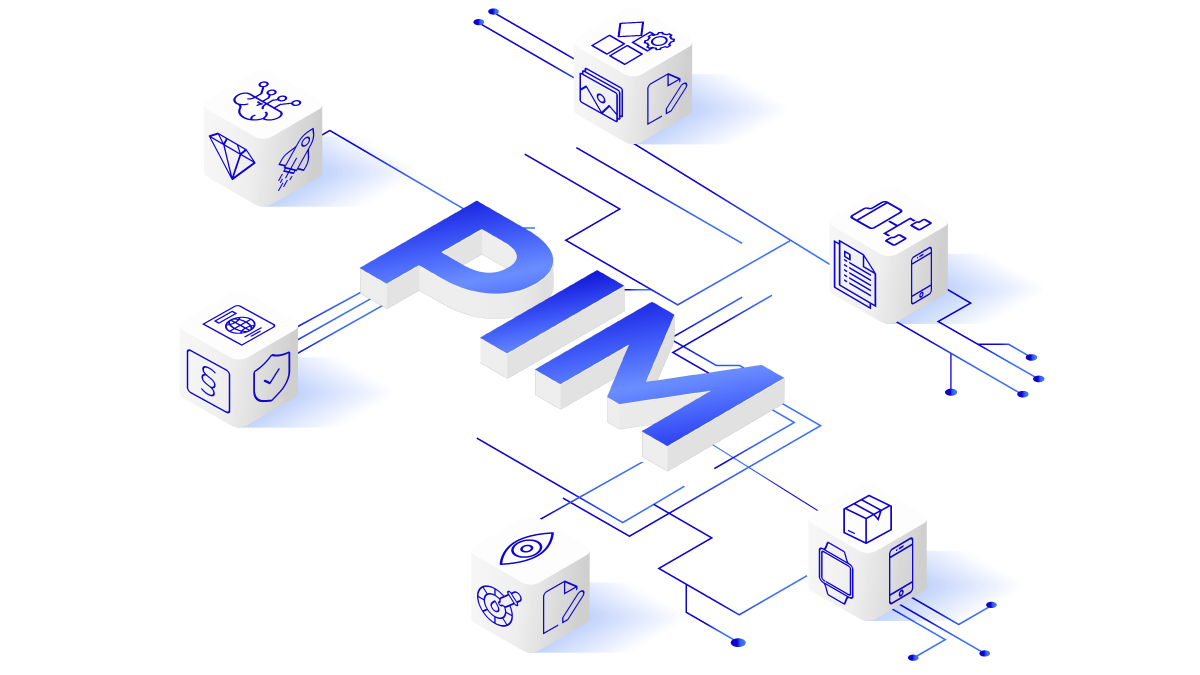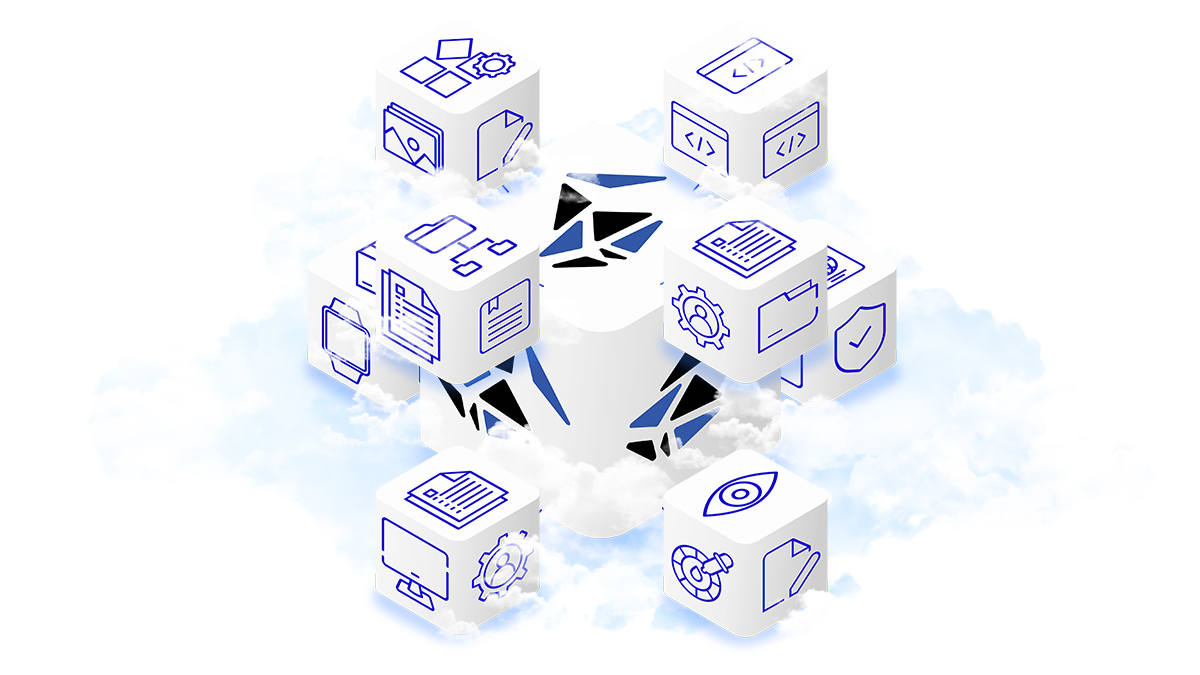PIM vs MDM: Key Differences and How to Choose the Right System
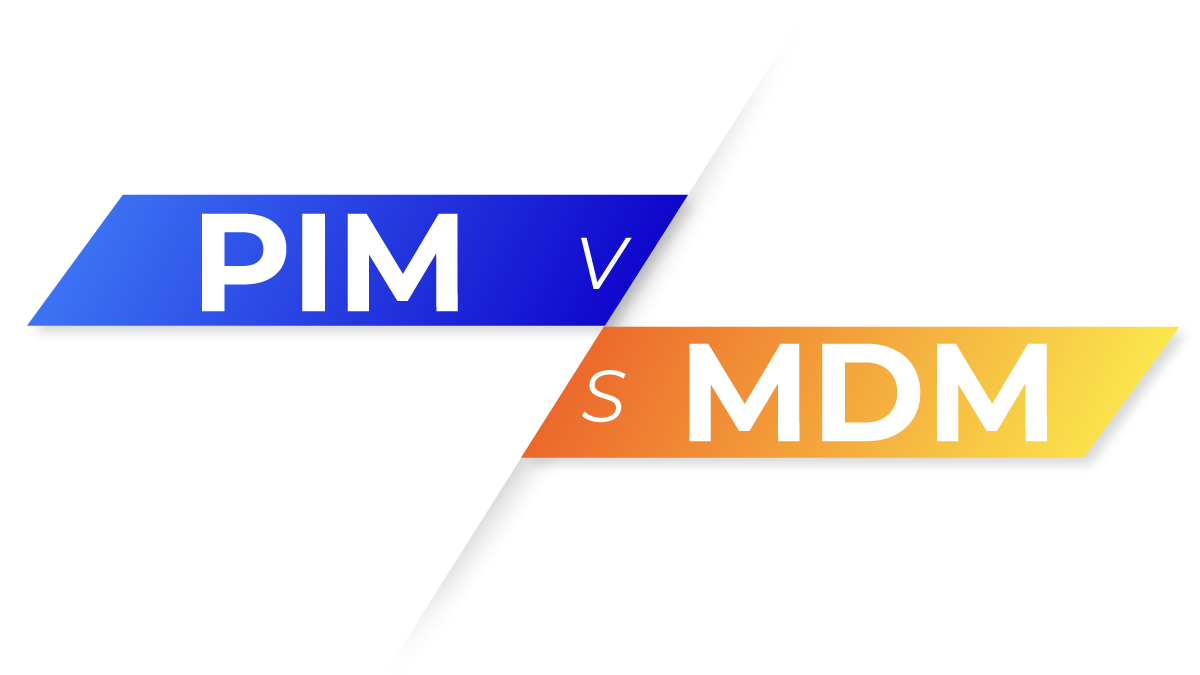
Managing thousands of SKUs in Ecommerce?
Get monthly tips to become the e-commerce pro your team needs.
Companies that want to scale across channels, markets, and customer segments need a reliable way to manage data. Two of the most important strategies for achieving this are Product Information Management (PIM) and Master Data Management (MDM).
At first glance, these approaches seem similar: both aim to break down silos, standardise information, and create a single source of truth. However, their focus, scope, and business impact are very different.
Understanding the differences between PIM and MDM is essential if you want to make the right investment for your business. Choosing incorrectly leads to wasted resources, compliance risks, or missed sales opportunities.
In this article, we’ll explain:
-
What PIM and MDM actually are
-
How their core functions and benefits differ
-
Whether your business needs a PIM software or an MDM system
By the end, you’ll know which system best supports your business goals or whether a combined strategy makes the most sense.
Why Businesses Need Data Management Strategies
Data is growing at an exponential rate. Gartner estimates that poor data quality costs organisations an average of $12.9 million each year, through inefficiencies, lost opportunities, and reputational risk.
Without a structured way to manage data:
-
Customers receive inconsistent product information
-
Teams duplicate effort, working with outdated files or spreadsheets
-
Compliance breaches become a real threat
-
Scaling into new markets or sales channels becomes painfully slow
PIM and MDM systems both aim to make your data trustworthy and easy to use. The difference lies in how they get there, each takes its own path to solve the problem.
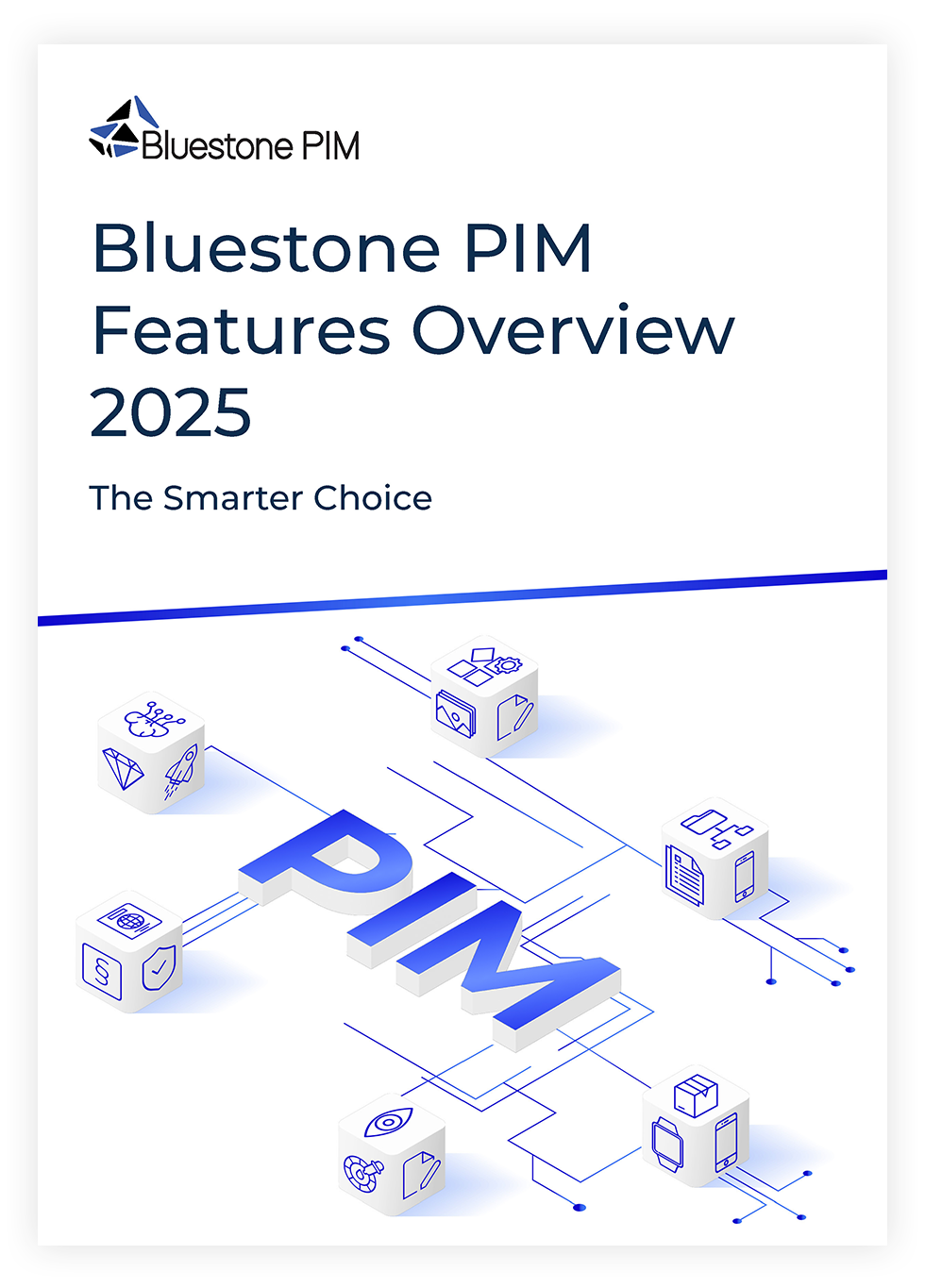
DOWNLOAD FREE E-BOOK
Bluestone PIM Features Overview
Explore the full range of capabilities in Bluestone PIM, from AI-powered enrichment and multilingual content creation to seamless integrations with leading commerce platforms.
The Role of PIM in Modern Commerce
Product Information Management (PIM) is specifically designed to make product data sales-ready. It ensures every product description, technical specification, image, and translation is accurate and enriched, ready for publication across websites, marketplaces, apps, and print.
Modern systems like Bluestone PIM go beyond simple storage. They act as the bedrock of omnichannel commerce, offering:
-
API-driven distribution to push content anywhere, anytime
-
AI Enrich to automatically generate or refine product content
-
Data modelling and bundling to manage complex product relationships
-
Internationalisation with translations and localisation filters
In short, PIM connects internal efficiency with external customer experience.
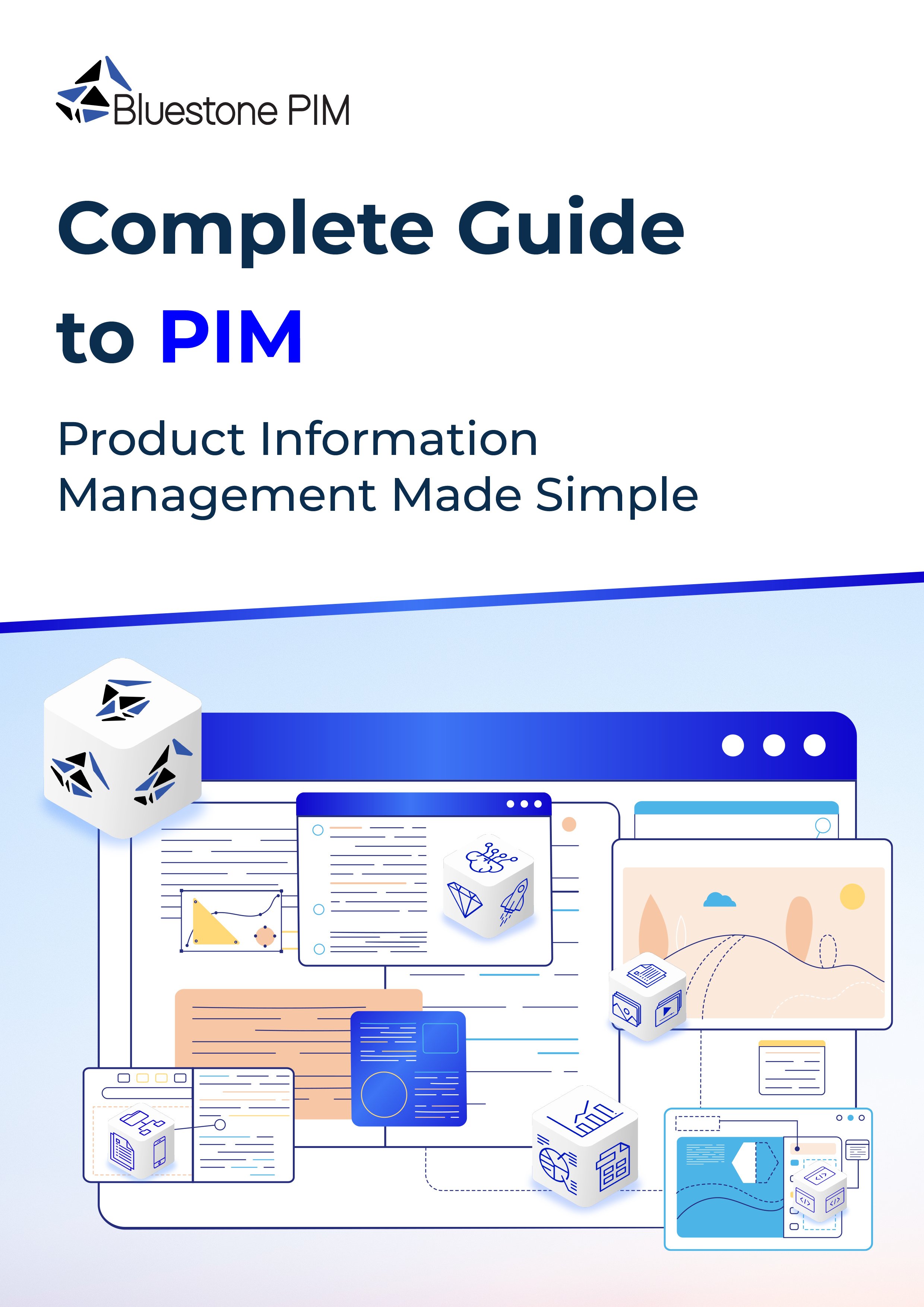
DOWNLOAD FREE E-BOOK
Product Information Management Made Simple
Your go-to resource for understanding, choosing, and using a PIM system to grow your business.
The Role of MDM in Enterprise Data Governance
Master Data Management (MDM) ensures that an organisation’s core reference data — customers, suppliers, employees, products, materials, finance — is standardised, governed, and trusted across the enterprise.
MDM is not about enriching content for commerce.
Instead, it’s about creating the golden record that executives, analysts, and compliance officers rely on for strategic and operational decision-making.
Enterprises use MDM to:
-
Enforce regulatory compliance (e.g. GDPR, SOX)
-
Eliminate duplicates and inconsistencies across data domains
-
Provide a single authoritative version of business-critical information
-
Facilitate collaboration between cross-functional teams
Where PIM drives external growth and customer engagement, MDM secures internal governance and operational excellence.
PIM vs MDM in Practice
In short:
-
PIM is a commerce-driven system designed to enrich, manage, and distribute product information for sales and marketing.
-
MDM is an enterprise-wide discipline that governs all critical business data, from products and suppliers to employees and customers.
|
Focus |
PIM |
MDM |
|
Primary Goal |
Deliver rich product data for sales and marketing |
Govern and unify enterprise-wide master data |
|
Scope |
Product catalogues, attributes, assets, translations |
Customers, suppliers, finance, HR, product master data |
|
Strengths |
Content enrichment, omnichannel syndication, faster time-to-market |
Data governance, compliance, trusted golden record |
|
Best Fit For |
Retailers, distributors, manufacturers with large SKUs |
Enterprises managing multiple data domains and regulations |
Before vs After Bluestone PIM
Even with a solid Master Data Management (MDM) foundation, sales and marketing teams often lack the enriched, campaign-ready product content they need.
MDM ensures accuracy, but it doesn’t create the engaging stories, visuals, and channel-ready formats required to sell. That's why many large companies implement both systems together.
Bluestone PIM acts as the foundation for commerce, with tools built to support fast marketing and effective sales:
|
Scenario |
Before (MDM Only) |
After (MDM + PIM) |
| New product launch | Sales and marketing manually clean data from spreadsheets; errors creep into product descriptions across channels. | AI Enrich validates and enriches data once, then API syndication pushes product content everywhere: website, marketplaces, print instantly. |
| Omnichannel campaigns | Campaigns delayed by mismatched content between CMS, ERP, and catalogues. | Composable architecture delivers consistent, enriched product data across all touchpoints, ensuring one unified brand voice. |
| International expansion | Manual translation causes errors, inconsistent localisation, and weeks of delay. | AI Linguist provides accurate, context-aware translations and region-specific adaptations, ready in days, not weeks. |
| Sales enablement | Reps rely on outdated PDFs or manually updated catalogues. | Real-time API feeds give sales instant access to enriched, up-to-date product content, complete with digital assets and pricing. |
| Marketing agility | Preparing campaigns requires weeks of manual formatting and data approvals. | AI-powered enrichment and automated workflows slash campaign prep time, enabling faster launches with higher content quality. |
Key takeaway for sales and marketing leaders:
MDM ensures your enterprise data is correct. Bluestone PIM makes it commerce-ready: enriched, localised, and syndicated at scale. It transforms product data into a growth engine for sales and marketing success.
Common Misconceptions about PIM and MDM
MDM covers product data, so I don’t need PIM.False. While MDM can manage product master data, it lacks the syndication, enrichment, and channel-readiness required for commerce.
PIM can replace MDM.
Not entirely. PIM is specialised for product information. It won’t manage customer, supplier, or employee data across the business.
Only large enterprises need these systems.
Not true. Mid-sized businesses with growing catalogues or expanding internationally can benefit significantly from PIM.
PIM vs MDM: Choosing the Right Path
-
If your challenge is product complexity, omnichannel expansion, or global growth, start with PIM.
-
If your challenge is data governance, compliance, or multi-domain consolidation, start with MDM.
-
If you’re a large enterprise with both needs, invest in both systems for maximum synergy.
Winning Customers Starts With PIM
The choice between PIM and MDM depends on your priorities. Both play vital roles in creating a trusted, usable data ecosystem. But if your business relies on product experiences to win customers and grow revenue, PIM is non-negotiable.
Bluestone PIM provides a composable, API-first foundation for product data, enabling companies to enrich, govern, and distribute product content at scale.
Want to see what's possible? Book a free consultation with our Bluestone PIM experts and see how a true best-of-breed, MACH-certified PIM software can power your digital growth.
See AI-powered PIM in action
Talk to our experts today and discover how Bluestone PIM can address your needs.



